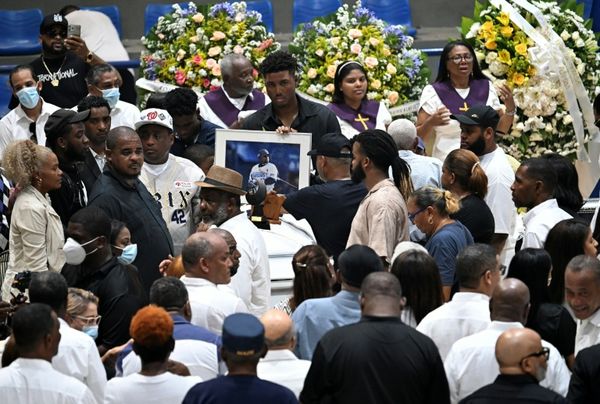
So what does cancelling HS2 north of Birmingham look like? There were ugly scenes at the Conservative conference hall even before the official death knell sounds: an uneasy HS2 minister batting off questions as above his pay grade, furious metro mayors declaring battle, railway leaders’ heads spinning at the logic.
In the real world, it’s even worse. From the massive crater and demolished homes, business and public spaces outside London Euston station to the hundreds of millions spent on compulsory purchases of houses on the original routes north from Birmingham, the consequences of a train line that may never exist are all too tangible. About 30,000 people are working on the scheme – and many of those believed they would have jobs for the long term.
Is there, however, a chance it could still be revived? After all, previous prime ministers and chancellors – with cross-party parliamentary support – have endorsed the project, and new incumbents in Downing Street could be a year away.
One of the key questions in the coming days will be how much of the work, both in political and design terms, is preserved – plus whether Rishi Sunak proposes to divert funds to other transport projects and if so, how? As Patrick McLoughlin, chair of the Transport for the North body and a loyal Conservative who was restrained amid the outrage of his peers in the region delicately put it, it’s not clear that there is equal long-term value in any of the other half-baked plans.
Northern transport authorities have made abundantly clear that no Northern Powerhouse Rail (at least not one that they would recognise from a decade of promises and their own careful plans) will be built anytime soon without the spine of HS2. The legislation currently going through the painstaking hybrid-bill planning process for the leg to Manchester is the culmination of years of work. Softening the blow for Greater Manchester’s mayor, Andy Burnham, with an underground Piccadilly station in the city centre, as some suggest, would be a peculiarly expensive way of cutting costs.
For now, construction is expected to continue on phase 1 of the project, which has been deemed too far advanced to be jettisoned, even by ministers instructed otherwise not to comment. That means the strange spectacle of brand new high-speed infrastructure being created from Old Oak Common in west London to Curzon Street in Birmingham and no further, bar the spur for high-speed trains to potentially join the west coast mainline in Handsacre, outside Lichfield in Staffordshire.
Joining up the dots, rather than leaving an expensive short stub of high-speed track floating between central London and the north, may make more sense to a future government. From an engineering point of view, the work under way at Old Oak Common needs a key decision over Euston confirmed by early 2025 to avoid exponentially more difficult work in years to come.
A few voices, such as Lord McLoughlin and the West Midlands mayor, Andy Street, have already talked about drumming up direct private investment – with a belief, as Street put it, that the private sector could “get a grip” on the scheme. That might provoke hollow laughs at HS2 Ltd and current contractors, delivering to an order of constant change and delay. But with Labour apparently reluctant to recommit before the election, a Tory plan B could at least give high-speed rail a stay of execution.







